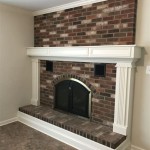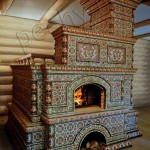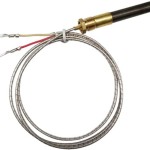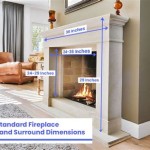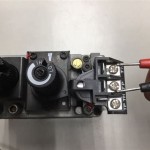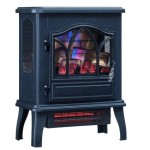Herringbone Brick Fireplace Insert: Aesthetics, Functionality, and Installation
A fireplace serves as a focal point in many homes, offering warmth, ambiance, and a sense of comfort. While the fire itself provides the heat and visual appeal, the surrounding structure significantly contributes to the overall aesthetic and functionality of the fireplace. One popular design choice for fireplace surrounds and inserts is the herringbone brick pattern. This article explores the various aspects of herringbone brick fireplace inserts, including their aesthetic advantages, functional benefits, and key considerations for installation.
The herringbone pattern is characterized by its distinctive arrangement of rectangular bricks laid at a 45-degree angle to each other, creating a repeating V-shape. This pattern derives its name from its resemblance to the bones of a herring fish. When applied to a fireplace, the herringbone pattern adds visual interest and sophistication, elevating the design from a simple, utilitarian structure to a statement piece within the room.
Fireplace inserts, in general, are self-contained heating units that are designed to be inserted into an existing fireplace opening. They are typically designed to improve the efficiency of the fireplace, either by burning fuel more cleanly or by distributing heat more effectively than traditional open fireplaces. Combining the functionality of a fireplace insert with the aesthetic appeal of a herringbone brick design creates a unique and highly desirable fireplace solution.
Aesthetic Advantages of Herringbone Brick
The primary advantage of using a herringbone brick pattern for a fireplace insert lies in its aesthetic appeal. The pattern inherently adds visual texture and complexity to the fireplace surround. Unlike a simple stacked brick pattern, the herringbone arrangement draws the eye and creates a more dynamic focal point. This is especially important in rooms with minimalist décor, where the fireplace can serve as a key element to prevent the space from feeling sterile or bland.
The herringbone pattern also offers versatility in terms of design styles. It can complement both traditional and modern interiors. In traditional settings, the herringbone pattern can enhance the classic charm of the fireplace, adding a touch of timeless elegance. In modern settings, it can provide a subtle contrast to the clean lines and minimalist aesthetics often found in contemporary designs. The pattern can be incorporated using various brick types and colors, allowing for further customization to match the existing décor.
Furthermore, the use of different brick colors and textures within the herringbone pattern can significantly alter the overall aesthetic. For instance, using a mix of red and brown bricks can create a rustic, warm, and inviting ambiance. Conversely, using lighter, neutral-toned bricks can evoke a more sophisticated and modern feel. The pattern itself provides a framework for creativity, allowing homeowners to personalize the fireplace to reflect their individual style and preferences.
The herringbone pattern can also be creatively combined with other design elements to further enhance its visual impact. For example, incorporating a contrasting border around the herringbone brickwork can define the insert and add a layer of visual separation. Similarly, using decorative tiles or stone accents alongside the herringbone brick can create a unique and personalized fireplace design.
Functional Benefits of Fireplace Inserts
Beyond aesthetics, fireplace inserts, in general, offer significant functional benefits compared to traditional open fireplaces. Traditional fireplaces often suffer from poor energy efficiency, with much of the heat generated escaping up the chimney. This not only results in higher heating costs but also contributes to drafts and makes it difficult to maintain a consistent temperature in the room.
Fireplace inserts, on the other hand, are designed to address these issues by providing a more controlled and efficient combustion process. They often feature closed combustion chambers, which allow for more complete burning of fuel and reduced emissions. This means that more of the heat generated is directed into the room, rather than being lost up the chimney. Some inserts utilize advanced technologies such as catalytic combustors or afterburners to further reduce emissions and improve efficiency.
Many fireplace inserts also incorporate fans or blowers to circulate the heated air more effectively throughout the room. This ensures that the heat is distributed evenly, eliminating cold spots and creating a more comfortable living environment. The ability to control the fan speed allows homeowners to adjust the level of heat output to suit their individual needs and preferences.
Furthermore, fireplace inserts offer greater control over the burning process. They typically feature adjustable air dampers that allow users to regulate the airflow to the fire. This enables them to control the burn rate and heat output, allowing for greater efficiency and longer burn times. Some models even include thermostats and remote controls for added convenience and control.
From a safety perspective, fireplace inserts offer advantages as well. The closed combustion chamber reduces the risk of sparks and embers escaping into the room, minimizing the potential for fire hazards. Moreover, many inserts are equipped with safety features such as overheat protection and automatic shut-off mechanisms.
Key Considerations for Installation
The installation of a herringbone brick fireplace insert is a critical process that requires careful planning and execution. It is generally recommended to hire a qualified professional with experience in fireplace installation to ensure that the job is done safely and correctly. Proper installation is essential for the safe and efficient operation of the fireplace insert.
Before beginning the installation process, it is important to assess the existing fireplace and chimney to determine their suitability for the new insert. The chimney should be inspected for any damage or obstructions and cleaned thoroughly to ensure proper ventilation. The size and shape of the fireplace opening must also be carefully measured to ensure that the insert will fit properly.
The installation process typically involves preparing the fireplace opening, installing the insert, and connecting it to the chimney. Preparing the opening may involve removing any existing surround, repairing any damage to the firebox, and ensuring that the opening is level and square. The insert is then carefully placed into the opening and secured in place using appropriate fasteners.
The connection to the chimney is a crucial step that must be performed correctly to ensure proper venting of combustion gases. The insert is typically connected to the chimney using a flue liner, which is a metal pipe that runs the length of the chimney. The flue liner should be sized appropriately for the insert and installed according to the manufacturer's instructions.
The installation of the herringbone brick surround is typically done after the insert is placed and connected to the chimney. This process involves carefully laying the bricks in the herringbone pattern, using mortar to secure them in place. The mortar joints should be carefully filled and smoothed to create a clean and professional appearance. Proper tools and techniques are essential for achieving a visually appealing and structurally sound herringbone brick surround.
Finally, it is important to follow all local building codes and regulations when installing a fireplace insert. These codes are designed to ensure the safety and efficiency of the fireplace and to protect the environment. Obtaining the necessary permits and inspections is essential for ensuring compliance with these regulations.
In summary, a herringbone brick fireplace insert provides a beautiful and efficient heating solution for homeowners seeking to enhance the aesthetic appeal and functionality of their fireplaces. The herringbone pattern adds visual interest and sophistication, while the fireplace insert improves energy efficiency and offers greater control over the burning process. Careful planning, professional installation, and adherence to building codes are essential for ensuring the safe and successful installation of a herringbone brick fireplace insert.

I Love Herringbone And The Way It Looks In Architectural Elements Like Brick T Home Fireplace Wood Burning Inserts Farmhouse

Dimplex Revillusion 24 Inch Built In Electric Fireplace Insert Firebox Herringbone Brick Nyc Fireplaces Outdoor Kitchens

Herringbone Brick Pattern For Fireplace No Molding Just A Mantel Tile Surrounds

42 Biltmore Radiant Wood Burning Fireplace Herringbone Liner Majestic

Dimplex Revillusion 42 Inch Built In Electric Firebox Fireplace Insert Nyc Fireplaces Outdoor Kitchens

Majestic 36 Radiant Wood Burning Fireplace W Herringbone Brick Patt Fireplaces Usa

Fireplace Chamber Lining Panels Brick Bond Solutions

Red Ceramic Herringbone Brick Bond Chamber Firesidebydesign Co

Dimplex Revillusion 36 Inch Built In Electric Fireplace Insert Firebox Nyc Fireplaces Outdoor Kitchens

Fireplace Chamber Lining Panels Brick Bond Solutions
Related Posts

